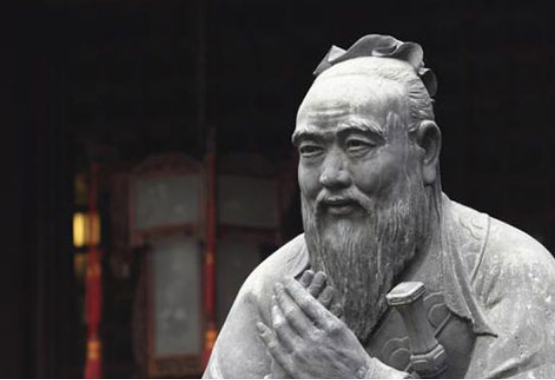The Unusual Meditation Practices of 5 Wise Spiritual Gurus...
...and how you can benefit from them!
Alan Watts: Walking Meditation
While many monks sat down in the traditional lotus position to meditate, Alan Watts spent many hours engaging in walking meditation.
For him, going for walks without a destination and purely for the sake of walking was one of his favorite methods of meditating.
For Alan Watts, meditation was a way to get in touch with reality as it is. Alan Watts understood that the symbols we use to communicate on a daily basis (like concepts, language, names, and ideas) was a detriment to getting in touch with reality as it is. The other detriment to getting in touch with reality is the constant chattering that takes place in our heads.
The solution for overcoming all of these obstacles was meditation.
But, here’s the paradox: He claimed that if you have a GOAL to reach with meditation, you are not meditating.
So, even though the purpose of meditation was to bypass all the symbols we use to communicate and get in touch with reality – HAVING that as a GOAL defeats the purpose of meditation.
Matthieu Ricard: Loving Kindness Meditation
Loving Kindness Meditation is another word for Metta Meditation.
Metta is a word that originates from Pali that means benevolence, kindness, and good will. The practice itself can be traced back to Theravada and Tibetan Buddhist lineages.
While the practice itself is ancient, a modern scientific field called "Compassion Meditation" has actually shown the efficacy of meditative practices like Metta.
Matthieu Richard, a french born buddhist monk is one of the most influential figures in this type of meditation.
He claims that it has literally changed his life and has caused him to be in a happy state of bliss all the time.
The benefits of Metta include: Increase in empathy, love, and self-acceptance toward oneself and others. Engaging in Metta meditation is involves generating kindness and benevolence to yourself and expanding to the universe.
First you start generating loving, benevolent feelings of kindness toward yourself. >>>Then, a good friend. >>>Then, a "neutral" individual in your life. >>>Then, a difficult, conflict driven individual. >>>Then, all four people above EQUALLY.
Finally, you extend that benevolence to the entire universe.
Lao Tzu: Chinese Taoist Meditation
Lao Tzu (also Laozi) literally translates to "Old Master" and is credited with being the founder of Taoism.
He's also rumored to have written the classic text Tao Te Ching.
The main emphasis of Chinese Taoist Meditation revolves around living in harmony with nature.
If you ever read the Tao Te Ching, you will notice that being anchored in nature is a central theme in the paradoxical writings in the text.
There's plenty of documented evidence that shows Lao Tzu being a devout practitioner of this type of meditation.
The main focus of Chinese Taoist Meditation revolves around the generation, transformation, and circulation of inner energy. When done properly, it quietens mind, body and unifies body and spirit.
It is very likely that Chinese Taoist Meditation was a notable influence in Lao Tzu’s life as you can clearly see the parallels in his writings.
Eckhart Tolle: Self-Enquiry and “I Am” Meditation
Atma Vichara — which is an ancient Sanskrit word that means to "investigate" the true nature of being and who "I" am is the central premise behind this type of “I am” meditation.
While this type of self enquiry meditation was popularized by people like the indian sage Ramana Maharshi, Eckhart Tolle has taken it even further to a much wider audience worldwide.
What’s interesting is that Tolle accidentally discovered this form of meditation when he was going through depression and was suicidal.
He pondered “I should kill myself” — then was confused because the “I” and the “my self” sounded like they were separate entities living within him.
While living on the street and sleeping on park benches for a number years, Tolle tried to clear his confusion.
He finally realized that he had been identifying with his ego (“I”) all this time, and this realization was the catalyst that helped him disidentify from his ego and get in touch with his true self — which is just pure, infinite consciousness.
To perform this type of meditation, you must ask yourself "Who am I?" and refrain from answering the question with man made words or symbols. This type of meditation is not an intellectual activity, rather it is more of an awareness of presence and how you are one with everything.
Maharishi Mahesh Yogi: Transcendental Meditation
While Maharishi Mahesh Yogi brought Transcendental Meditation from India to the West in 1955, it has spread so far that there's over 5 million practitioners worldwide.
Transcendental Meditation is a form of Mantra Meditation that involves the repetition of a specific mantra for 15-20 minutes per session twice a day while sitting with one's eyes closed. The specific mantra used by the practitioner is generally based on the gender and age and is typically Tantric names of Hindu deities.
You see…..ancient Sanskrit mantras have been used for THOUSANDS of years to attract prosperity, well-being and abundance by some of the most evolved human beings from the past.
In addition to bringing you to the present moment, these mantras contain within them the power to literally expand your consciousness and make you a magnet for health, wealth, abundance, and prosperity as well.
Maharishi Mahesh Yogi (as well as millions of others) claim that Transcendental Meditation is a cornerstone of living a serene, prosperous life.
















